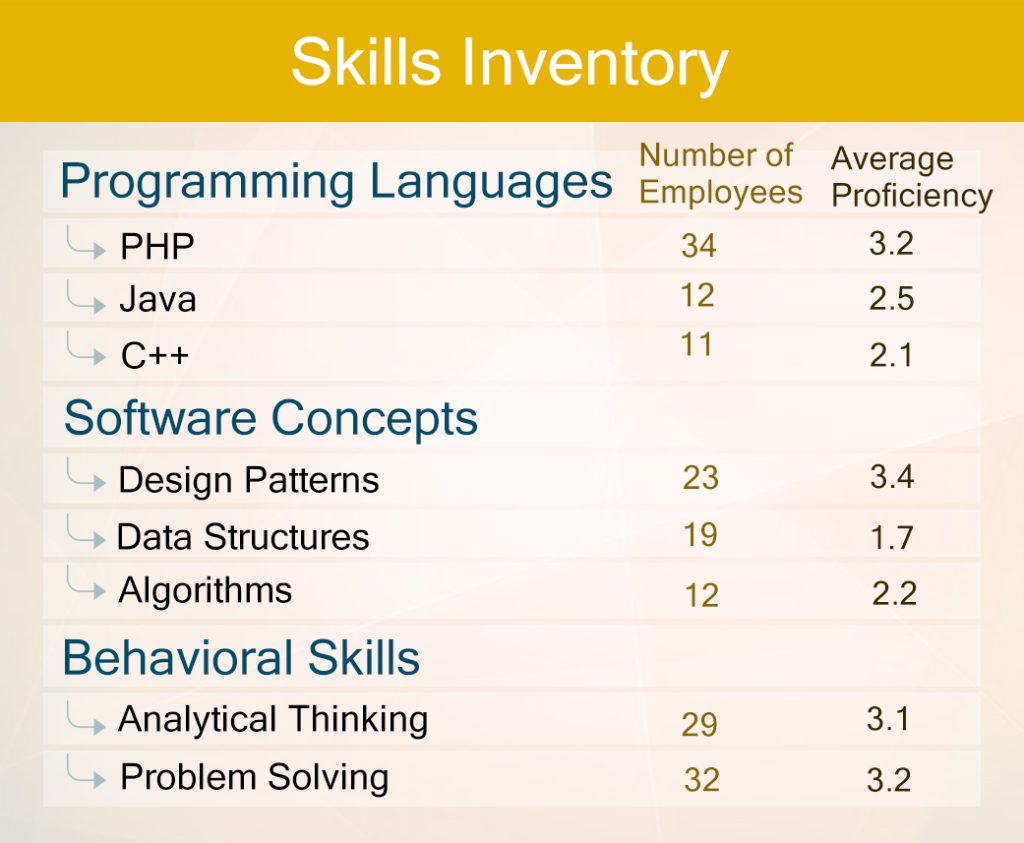Along with the growing talent shortage, organizations are also grappling with the problem of the “skills gap” – or the mismatch between the individual’s skills and the skills required to perform a job efficiently.
According to Gartner, 58% of the global workforce needs new skills to complete their work. Truly, that percentage is astounding! A recent LinkedIn report goes on to suggest that skillsets have changed 25% since 2015. Even more astounding is that this percentage is expected to double by 2027.
Because business success is highly dependent on people’s success, consultant Korn Ferry predicts that 85 million jobs could remain unfilled by 2030 – due to a shortage of the right skills. This translates to a business loss of $8.5 trillion (yes, you read that right: it’s not in billions) due to unrealized revenues.
These challenges indicate that more organizations must become more skills-focused. This is achievable through a skills ontology framework. Heard the word “ontology” for the first time? Don’t worry, you are not alone. Simply put, it’s a term used to describe how to “organize information or concepts.
In this blog post, let us delve into why your organization needs a skills ontology framework.
What is Skills Ontology?
Most existing skill systems depend on the “database” of skills, representing minimal functionality. A skills database simply contains a list of skills (with the proper names). At the higher level, a skills taxonomy provides a hierarchical relation between skills.
Skills ontology is at a higher level than Skills Taxonomy – and “represents a set of unique skills with a defined relationship to other skills.” Unlike the skill database or taxonomy, the skills ontology framework presents a fluid database of skills – and contextualizes the relationship between skills (across different subjects or jobs).
Here’s a simple example: Let’s assume you are a senior employee aspiring for a leadership position in your company. To learn more about leadership skills, you enter a bookstore – and instantly head to the “Business” section to pick up the right leadership book. A “traditional” skills system may recommend all the best picks from the “Business” section.
While the “Business” section may be useful, you could be missing out on effective leadership books in the “Management” section. The skills ontology framework understands this relationship – and recommends books from all related sections (so you can choose from a broader collection).
This is precisely how the skills ontology framework works within any organization. It uses the common language to compare skills across business teams and functions – even when the skills are described in a different language.
Why Every Enterprise Needs Skills Ontology
With a skills ontology framework in place, organizations no longer have to depend on traditional job descriptions – but can easily identify the required skills for a particular job. Why do skills gaps exist? The primary reason is that rapidly developing technologies outpace individuals’ ability to acquire new skills.
- Skill ontology enables the organization to identify and meet the skills gap – as and when they occur. They can identify the new skill and add it to the right skill category in the framework.
- Moreover, skills ontology assists recruiters in scanning through job applications and resumes quickly. It helps identify suitable candidates with the required job skills (as advertised in the job description).
- It also helps in internal recruitment by building a skills database – along with every individual’s proficiency level in the particular skill.
As organizations add more jobs and skills, the skills ontology framework can connect more skill-related data points – and present a comprehensive view of the organization’s workforce capabilities. They can further leverage this framework to:
- Identify and prioritize critical skills.
- Deploy the right talent for the right work.
- Update job descriptions based on identified skills.
- Structure their training programs based on the skills gaps.
5 Key Benefits of Implementing Skills Ontology
Skills ontology can help an organization to transform into a skills-based organization to meet its changing job requirements. Here are the five major benefits for organizations implementing skills taxonomy:
- Talent acquisition
According to the Society for Human Resource Management, the average hiring costs in U.S.-based enterprises were $4,683 (for medium-level candidates) and $28,329 (for hiring senior executives. In a competitive job market, organizations incur high talent acquisition costs. What makes matters worse is when companies recruit personnel without the right skills.
Skills ontology can improve talent acquisition efficiency by identifying every candidate’s existing skills – and the exact skills needed to perform their job. Instead of depending on informed “guesswork,” organizations can clearly define the required skills that candidates must possess.
In the long run, organizations can run job advertisements or announcements – with an accurate list of required skills. Overall, a skills ontology framework can reduce talent acquisition costs and improve hiring productivity.
- Talent development
Skills ontology provides a common language that enables companies to focus on skill development. Job descriptions no longer drive the work – and employees (with diverse skills) can be added to the same project team.
Further, employees can pursue their own skill development – by creating and managing their skill profiles on the Skills Profiler tool. They can evaluate their hard and soft skills – and identify various areas of improvement.
Organizations can also set their skills development goals and update their job descriptions from the list of skills stored in the skills ontology framework. For example, a job posting for a “frontend software developer” can include a new skill (like a new programming language or development framework).
- Competency gaps
The skills ontology framework also addresses competency gaps in organizations. Companies are faced with increasing challenges like:
- Employees leaving their jobs.
- Delays in recruiting new talent.
- Reskilling their existing workforce.
According to Gartner, 47% of HR executives do not know the current competency gaps in their organization – while 40% have not created employee development programs to meet their changing requirements.
HR industry analyst Josh Bersin points out the “urgency to build and use skill ontologies.” He suggests that the global pandemic is creating job mobility – with more people either leaving their jobs or changing their career path. Thus, more companies are hiring candidates for jobs they have not done before.
- Skill identification
Every organization needs a comprehensive skills database to identify and source talent for a particular project or assignment. With a skills ontology framework, they have an available internal database to use as a source for their job requirements.
The skills ontology framework drives HR decisions by either:
- Identifying the existing talent pool to provide the necessary expertise.
- Hire candidates (with the in-demand skills) from the external job market.
Depending on priority, organizations can also reassign employees (with a specific skill or expertise) to another functional or project group. They do not have to “guess” about the employee skills that can be used in multiple projects.
- Upskilling and reskilling
To carve out their upskilling and reskilling strategies, HR teams currently have to put in a lot of effort in:
- Identifying the current skillsets in their workforce.
- Mapping each skill to the existing job roles.
- Predicting the future skills that they would need.
The skills ontology framework simplifies HR work by providing a connected database – with all the existing skills, mappings, and future requirements. In short, skills ontology does your hard work by automatically analyzing job requirements, employee & applicant resumes, and external job data.
Based on these insights, HR managers can design and implement their upskilling and reskilling programs. Skill ontologies also identify talent development gaps that require immediate investments. Skill ontologies also provide visibility into emerging trends in job skills and competencies.
Conclusion
In the age of talent shortage and changing job requirements, organizations need a reliable skills ontology framework to map their existing skills to new job roles. In this blog, we discussed the importance of the skills ontology framework – and how it can benefit organizations.
With its focus on skill development, IYS is enabling companies to transform into skills-based organizations. We offer a range of skill-based offerings, including:
- Skills Taxonomy – The comprehensive database of diverse skills across industries and business functions
- Skills Profiler – The tool used to create and map skill profiles.
- Skills Analytics – The application used to capture real-time skills data for decision-making.
Are you prepared to transition into a skills-centric organization? We can help you in this transformational journey. Drop us a message with all your requirements at connect@itsyourskills.com.





